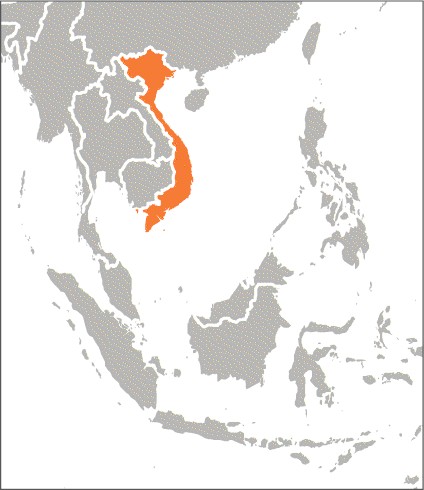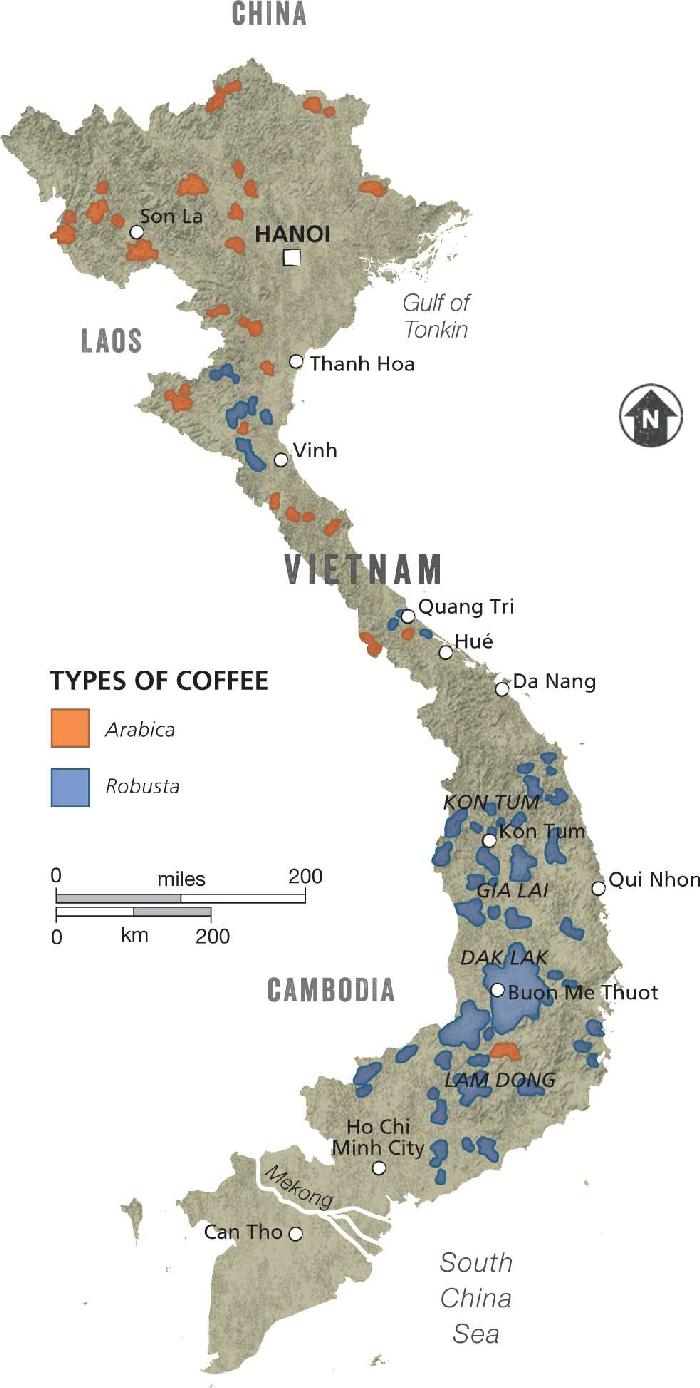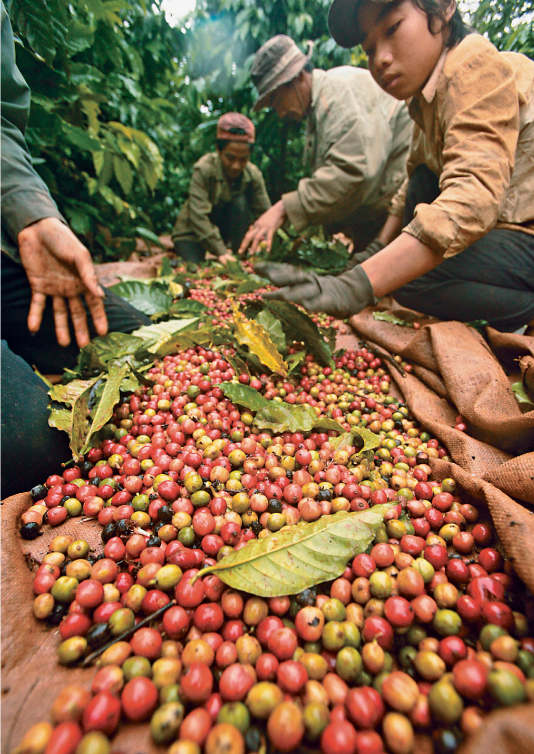Vietnam could be considered an unusual inclusion in a book that focuses on high-quality speciality coffee, as it produces predominantly Robusta. However, Vietnam is different because of the impact it has had on every coffee-producing country in the world, and therefore merits inclusion to give some understanding.

Coffee was brought to Vietnam by the French in 1857, and was initially cultivated under the plantation model. However, this did not gain any momentum as a commercial venture until around 1910. Cultivation in the Buôn Ma Thuột region, in the Central Highland, was interrupted by the Vietnam war. After the war the coffee industry became increasingly collectivized, reducing yields and production. At this point around 20,000 hectares of land produced around 5,000–7,000 tonnes (5,500–7,700 tons) of coffee. Over the next 25 years, the amount of land under coffee would increase by a factor of 25 and the country’s overall production by a factor of 100.
Much of the industry’s growth was down to the Doi Moi reforms of 1986, which permitted privately owned enterprises in industries that produced commoditized crops. In the 1990s, a huge number of new companies were formed in Vietnam, many focusing on the large-scale production of coffee. At this time, specifically in between 1994 and 1998, prices for coffee were relatively high, which provided strong incentives to increase coffee production. Between 1996 and 2000, Vietnam’s coffee production doubled and this would come to have a devastating effect on the global price of coffee.
Vietnam’s massive increase in production, which made it the second-largest producer of coffee in the world, resulted in a state of global oversupply and this caused a massive price crash. Despite the fact that Vietnam was producing Robusta rather than Arabica, it still affected the price of Arabica because many of the largest purchasers needed a commodity product rather than a quality one. Thus the oversupply of low-quality coffee worked in their favour.
From the high point of 900,000 tonnes (990,000 tons) of coffee in 2000, production declined sharply. However, as coffee prices recovered, so did Vietnam’s production. The 2012/2013 crop was around 1.3 million tonnes (1.4 million tons) and it continues to have a large effect on the global industry. In recent years there has been a shift towards more Arabica, although the lack of altitude presents a challenge to achieving a high-quality product.

TRACEABILITY
There are several large estates in Vietnam, often controlled by multinational companies, so it is possible to see good levels of traceability. However, finding high-quality lots will prove extremely challenging.
 Vietnam is the second-largest producer of coffee in the world, and most coffee is harvested by hand. At a plantation in Buôn Ma Thuôt workers remove twigs and leaves from the fresh cherries.
Vietnam is the second-largest producer of coffee in the world, and most coffee is harvested by hand. At a plantation in Buôn Ma Thuôt workers remove twigs and leaves from the fresh cherries.
TASTE PROFILE
Very little high-quality coffee is available in Vietnam, and so most tastes flat, woody, and lacks sweetness or much character.
GROWING REGIONS
Population: 92,700,000
Number of 60kg (132lb) bags in 2016: 26,700,000
Because there has been little demand for traceable coffee, there aren’t strongly defined growing regions whose names are used by roasters.
CENTRAL HIGHLANDS
This region, a series of highland plateaus, contains the provinces of Dak Lak, Lam Dong, Gia Lai and Kon Tum and is primarily a producer of Robusta. The coffee industry is centred around Buôn Ma Thuôt, the capital of the province. Dak Lak and Lam Dong are the primary producers, growing about seventy per cent of the country’s Robusta crop between them. Arabica has been grown in the Central Highlands for about one hundred years, in the area around the city of Dalat in the Lam Dong region, but this makes up a very small part of the national production.
| Altitude: | 600–1,000m (2,000–3,300ft) |
| Harvest: | November–March |
| Varieties: | Robusta varieties, some Arabica (probably Bourbon) |
SOUTH VIETNAM
There is some production northeast of Ho Chi Minh City, in the province of Dong Nai. This is primarily Robusta, and has attracted interest from large corporations such as Nestlé who are looking to improve their supply chain.
| Altitude: | 200–800m (650–2,600ft) |
| Harvest: | November–March |
| Varieties: | Robusta |
NORTH VIETNAM
Arabica grows in the provinces of Son La, Thanh Hoa and Quang Tri in the north of the country, near the city of Hanoi. There is sufficient altitude for Arabica to grow well, but it is rare to see high-quality coffees produced here. Despite Arabica making up only three to five per cent of Vietnam’s total production, this is now enough to make it the fifteenth-largest producer of Arabica in the world.
| Altitude: | 800–1,600m (2,600–5,200ft) |
| Harvest: | November–March |
| Varieties: | Bourbon, Sparrow (or Se), Catimor, Robusta |
 In the southern province of Binh Dong, a worker moves one bag among hundreds in a warehouse owned by communist exporters. Most of the beans grown in South Vietnam are of the Robusta variety.
In the southern province of Binh Dong, a worker moves one bag among hundreds in a warehouse owned by communist exporters. Most of the beans grown in South Vietnam are of the Robusta variety.